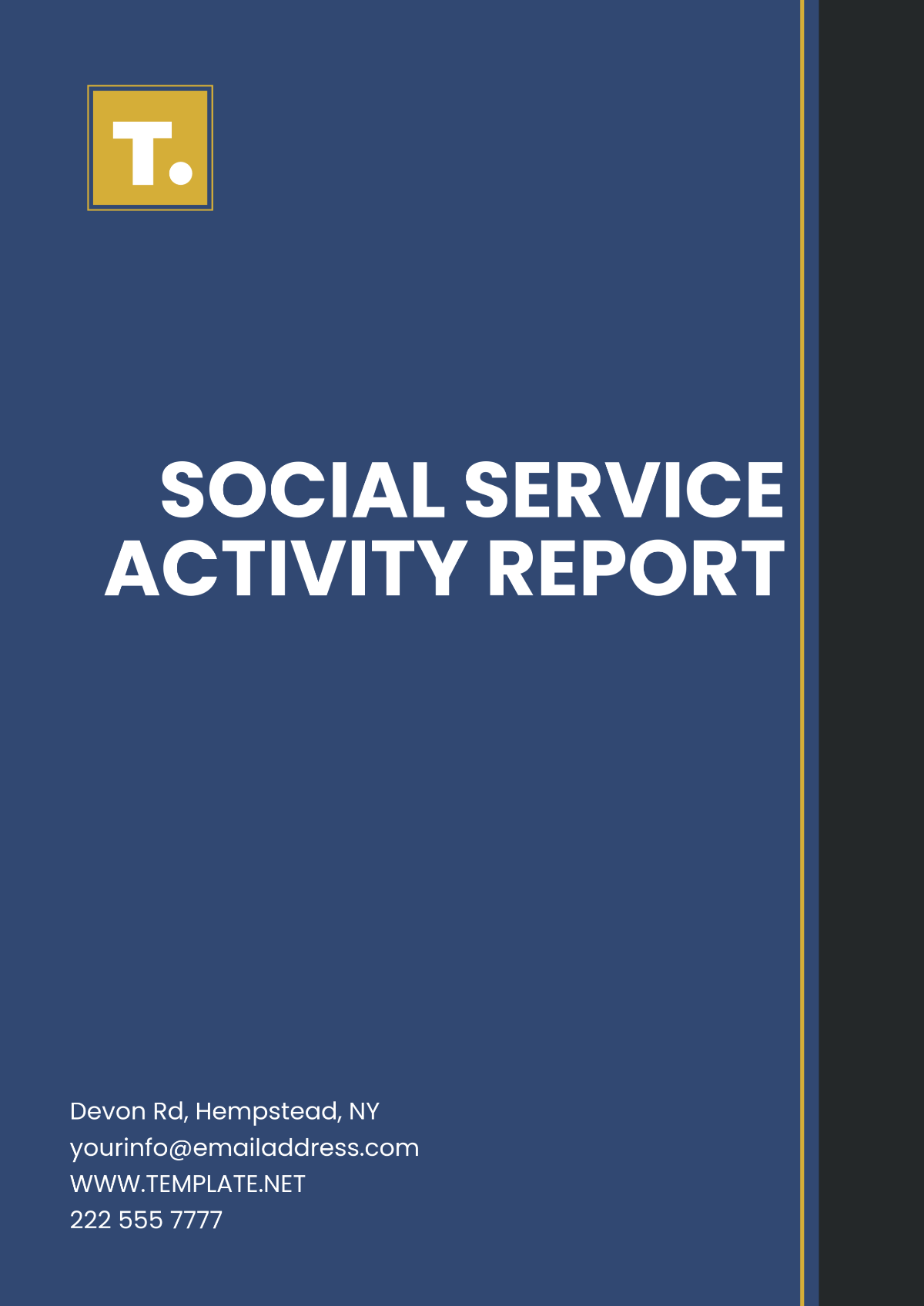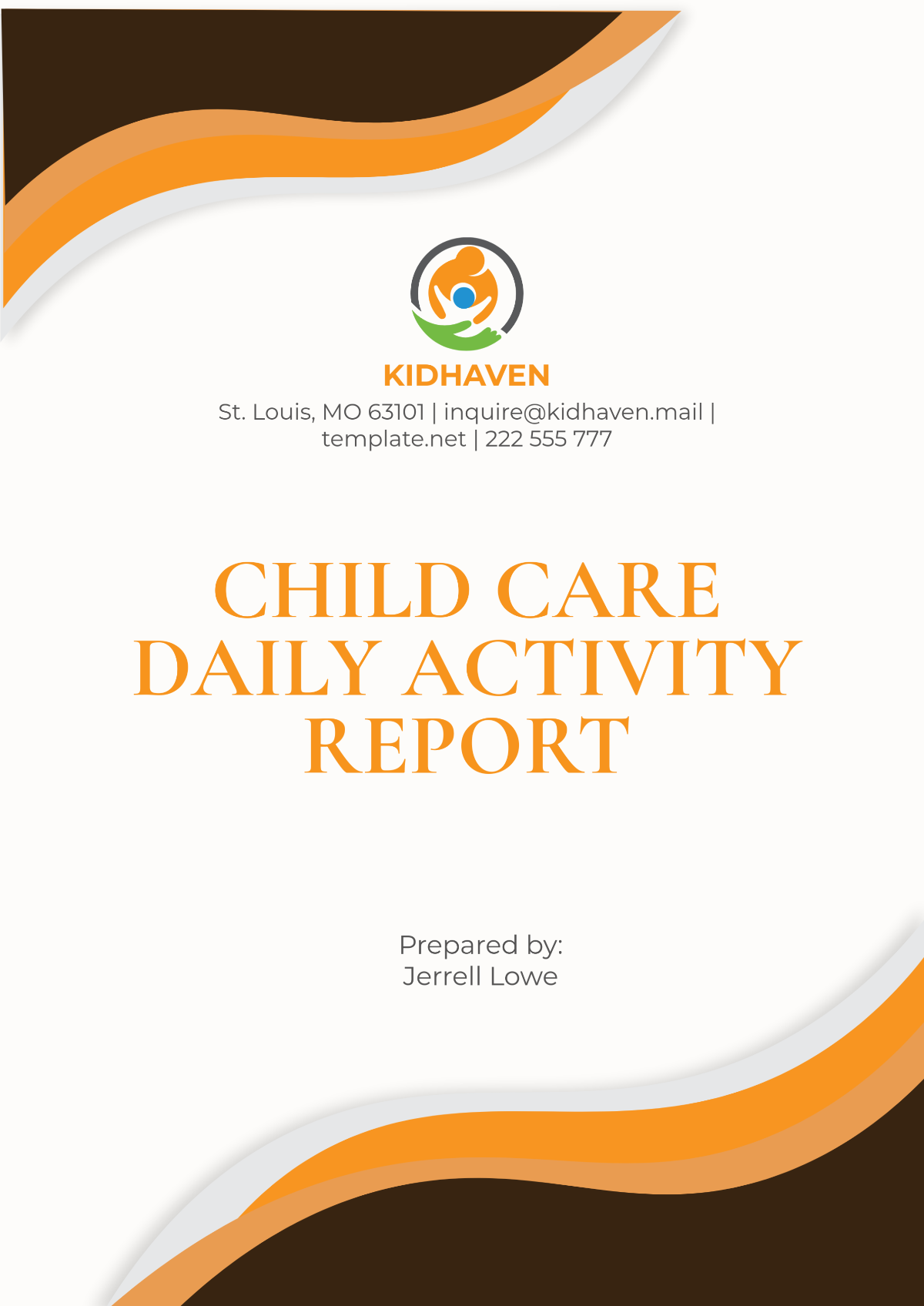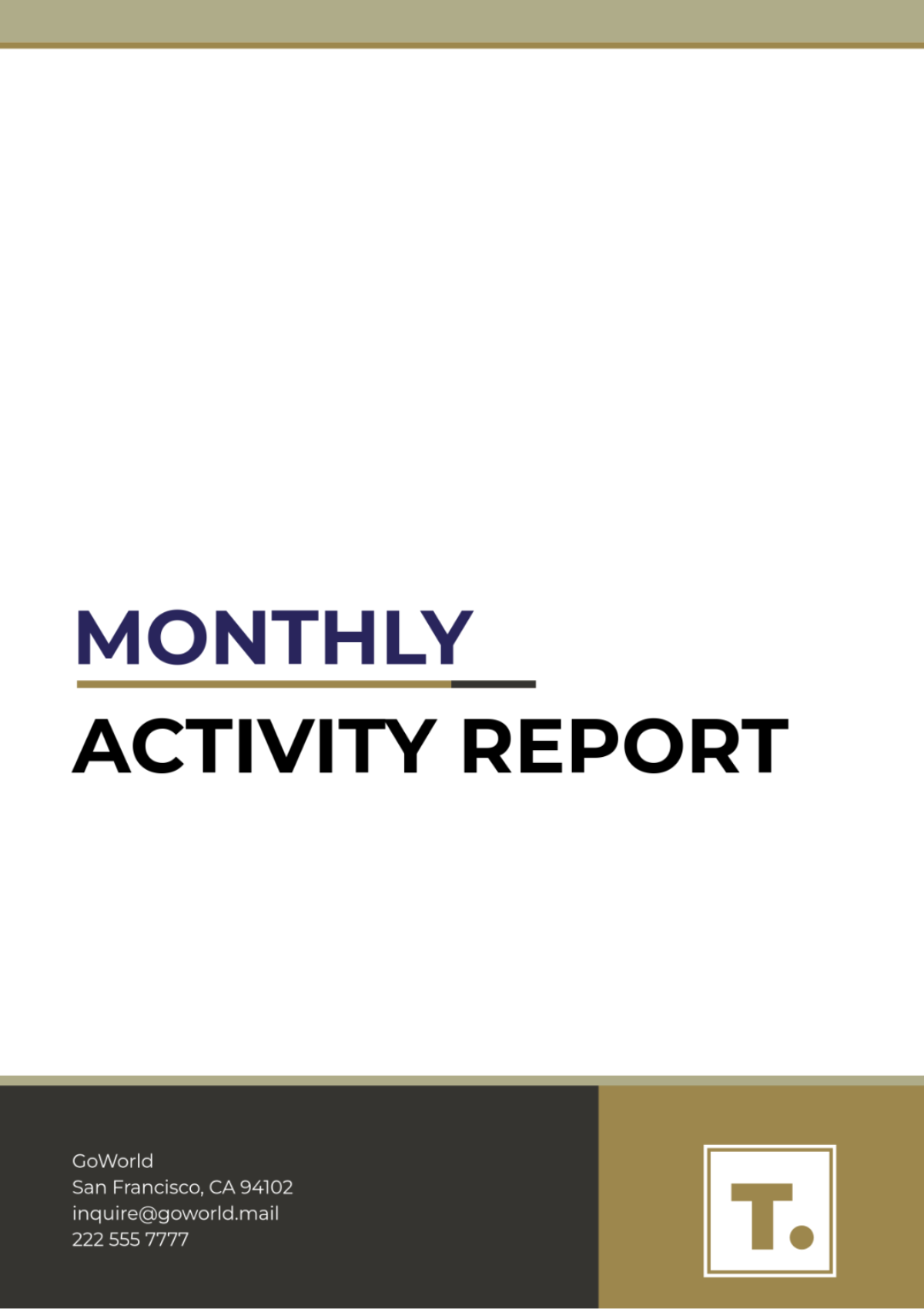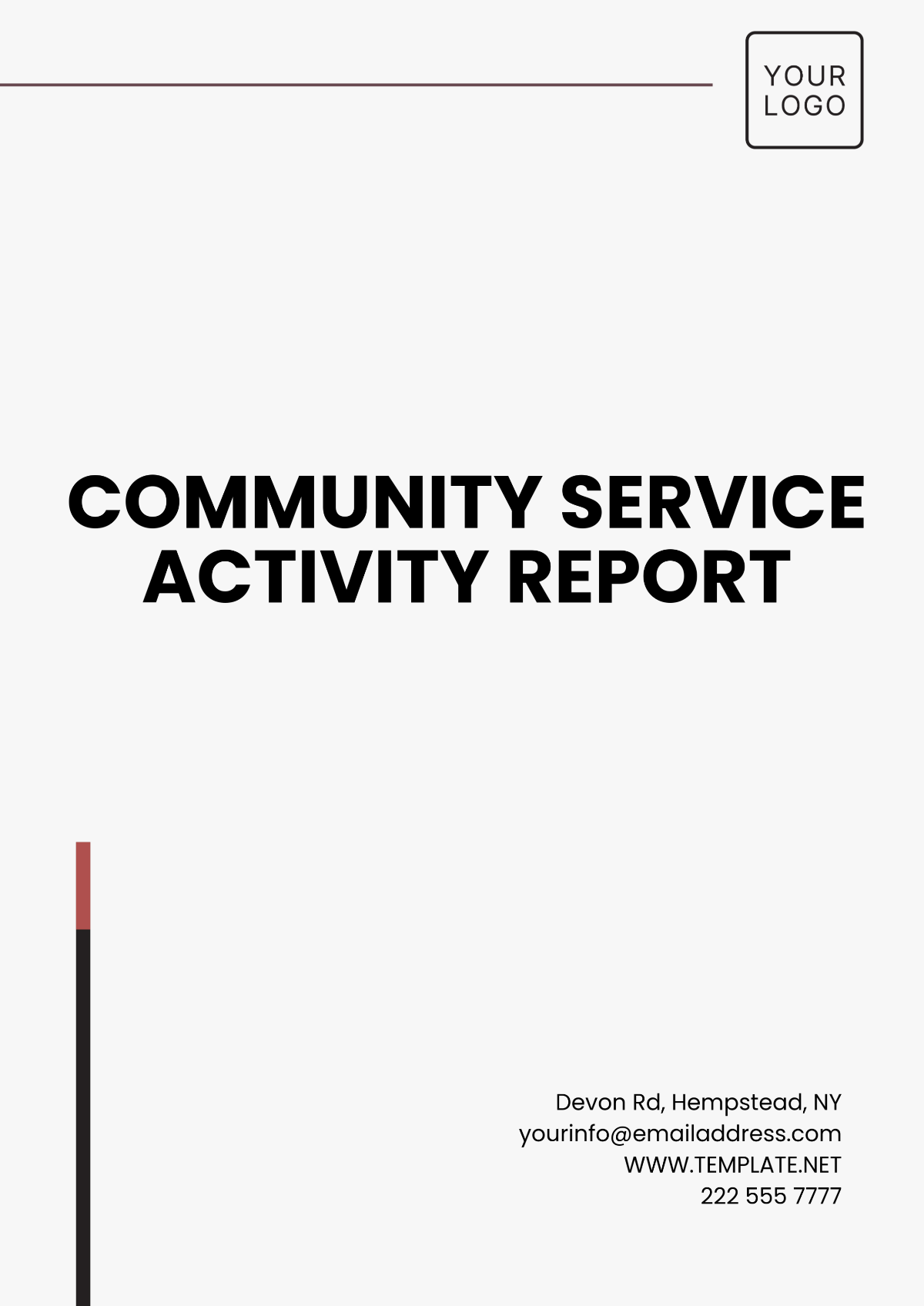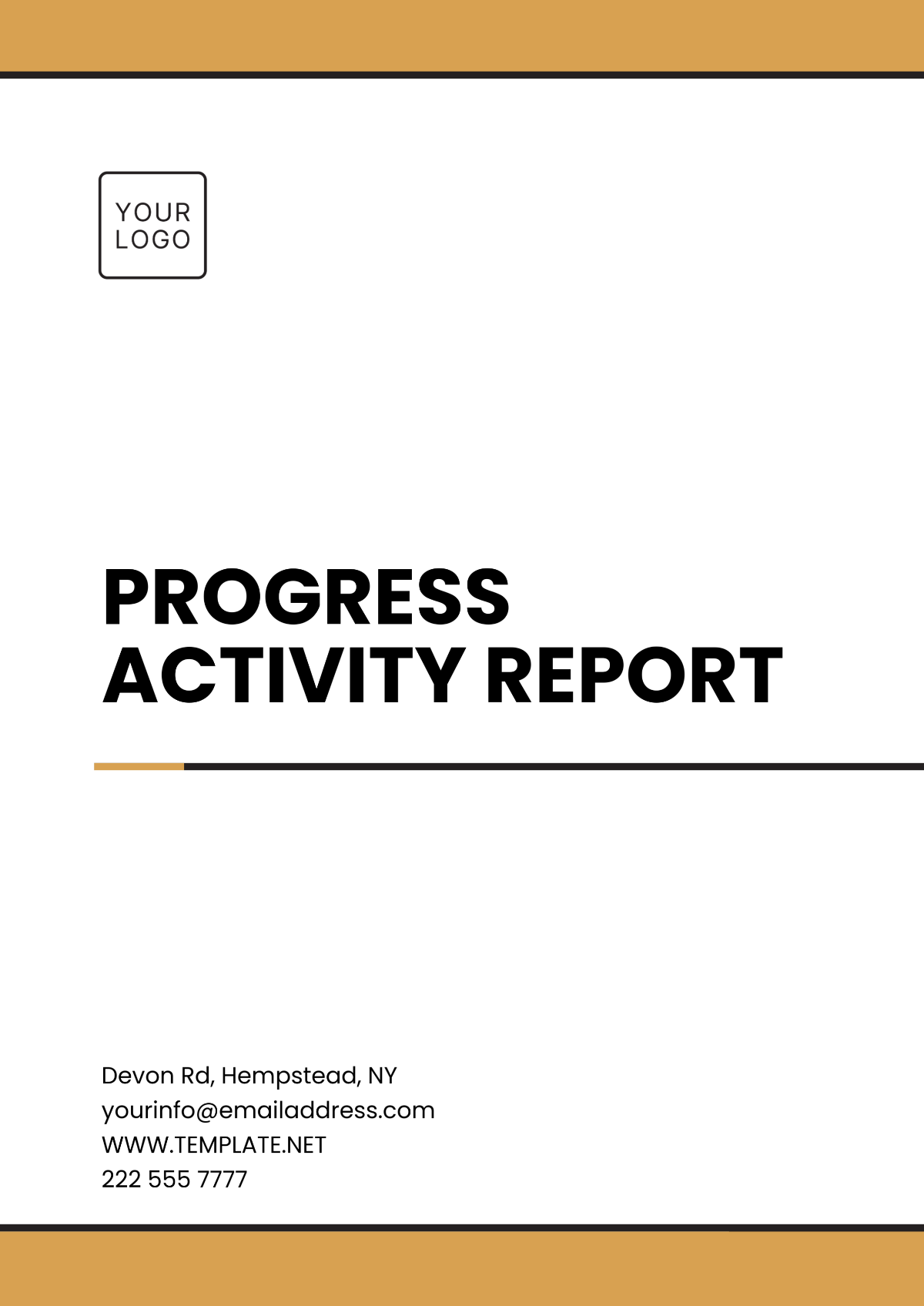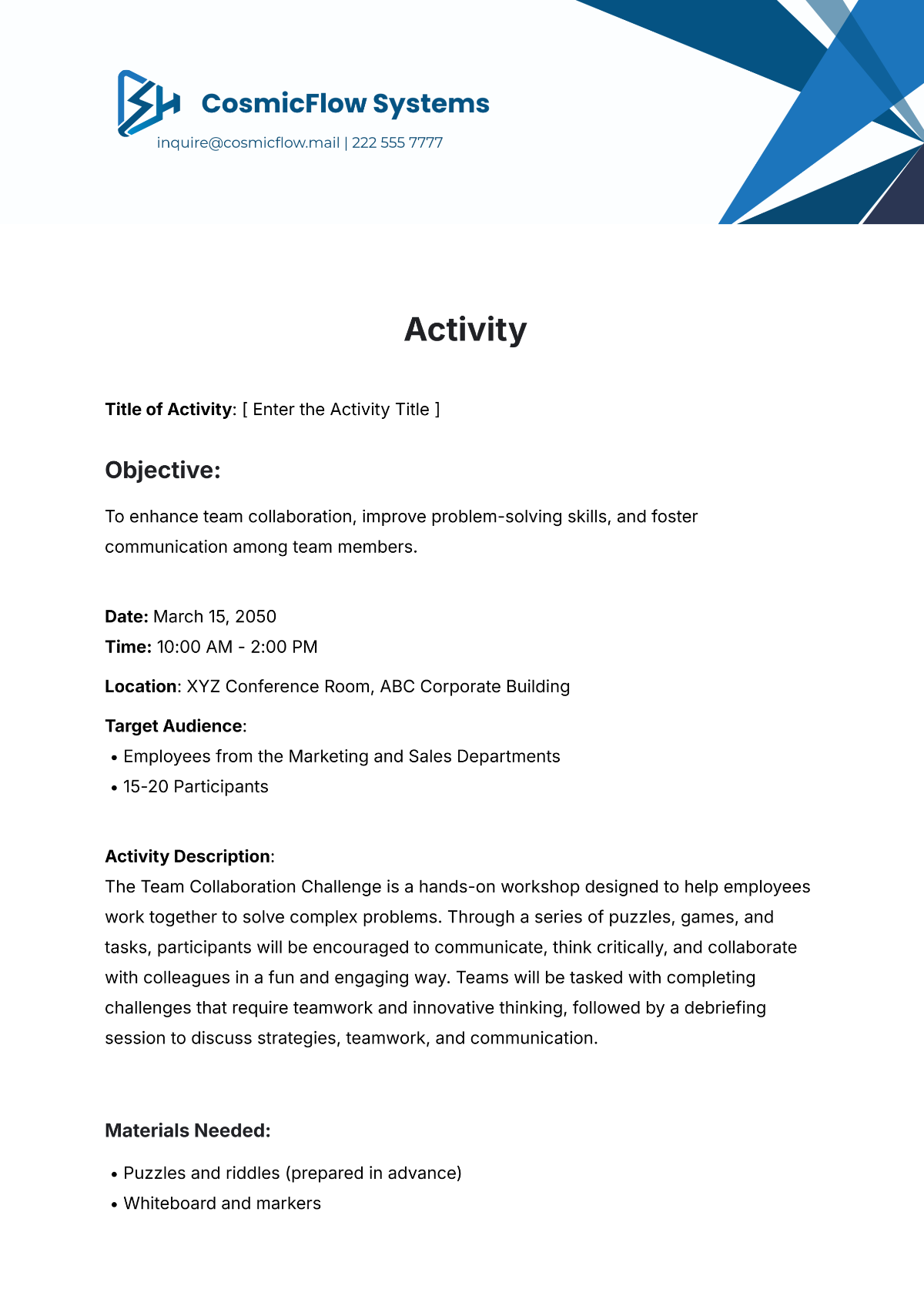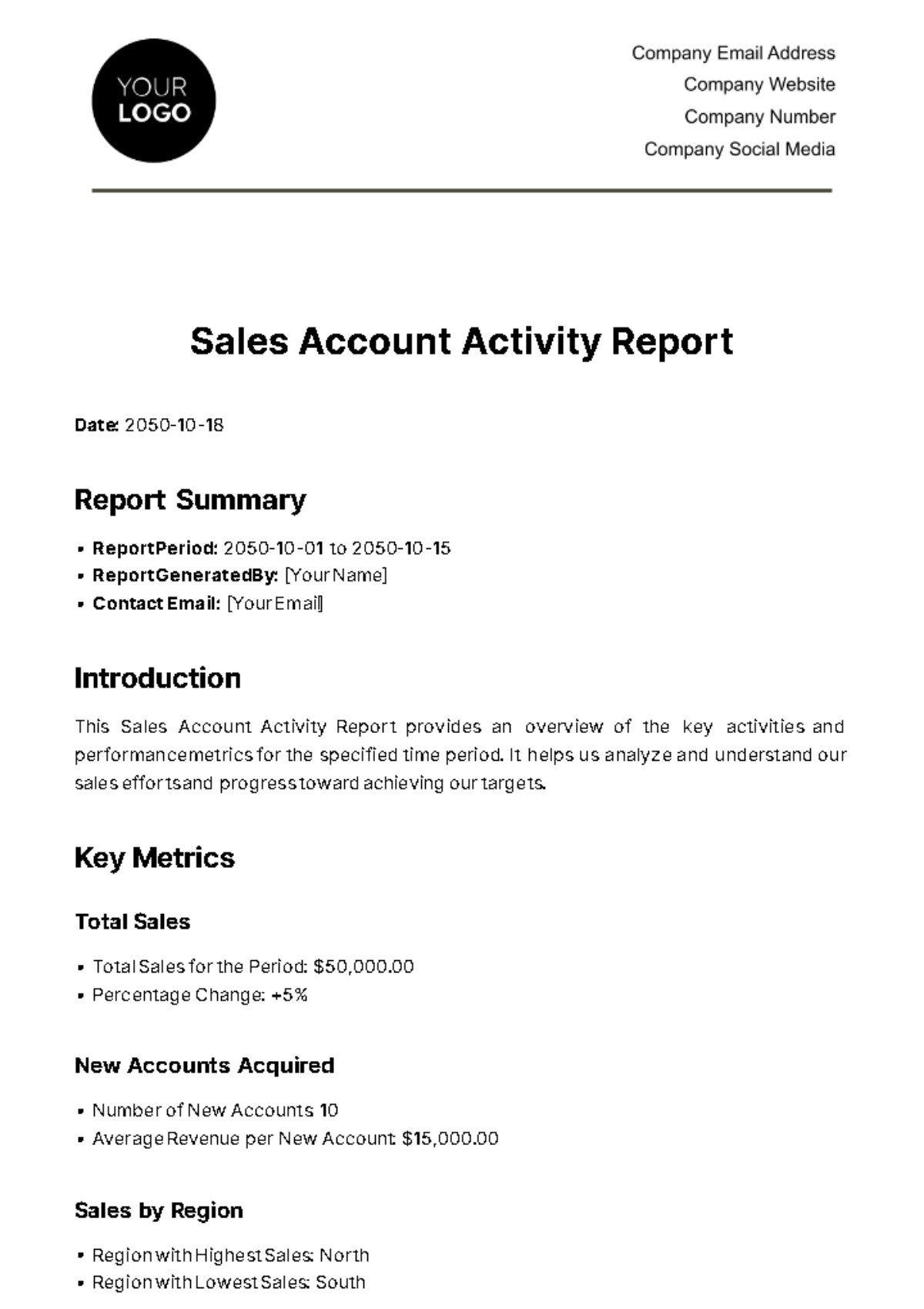TRAINING ACTIVITY REPORT
Date | [Date] |
Name | [Your Name] |
Company | [Your Company Name] |
Introduction
This report aims to assess the effectiveness of the recent training programs conducted within the organization. It includes feedback from participants and trainers and evaluates how well the training objectives were met in alignment with organizational goals. The analysis is structured in a systematic manner to provide a comprehensive overview.
Methodology
Data Collection
Data was collected through surveys, interviews, and performance assessments. Feedback was gathered from both participants and trainers to ensure a balanced analysis of the training programs.
Evaluation Criteria
The programs were evaluated based on the following criteria:
Relevance to organizational goals
Fulfillment of training objectives
Feedback from participants
Feedback from trainers
Findings
Relevance to Organizational Goals
The training programs were designed to enhance skills that align with the strategic objectives of the organization. The core areas of focus included improving leadership capabilities, technical skill enhancement, and fostering teamwork and collaboration.
Table 1 shows the alignment of each training module with organizational goals:
Training Module | Organizational Goal | Alignment Level |
|---|---|---|
Leadership Development | Enhance leadership capabilities | High |
Technical Skills Enhancement | Improve technical expertise | Medium |
Team Collaboration | Promote team synergy | High |
Fulfillment of Training Objectives
Each training program had specific objectives. The extent to which these objectives were met is detailed below:
Leadership Development: 85% of objectives were met, with noted improvements in leadership skills and decision-making.
Technical Skills Enhancement: 70% of objectives were met, indicating room for further development in specific technical areas.
Team Collaboration: 90% of objectives were achieved, reflecting significant improvements in team dynamics and communication.
Participant Feedback
Participants provided valuable insights into the effectiveness and areas for improvement within the training programs. Overall, feedback was positive, highlighting engaging content and effective delivery methods. Some constructive feedback suggested the need for more hands-on activities and real-world application examples.
Trainer Feedback
Trainers emphasized the importance of interactive sessions and received positive responses to their teaching methods. However, they highlighted the challenge of catering to varied skill levels and suggested additional resources could be beneficial.
Conclusion
The assessment of the training programs indicates a successful alignment with organizational goals and a high rate of objective fulfillment. While feedback from both participants and trainers is predominantly positive, there is an opportunity to further enhance the programs by incorporating more practical elements and addressing the diversity in skill levels among participants.
Recommendations
Based on the findings, the following recommendations are proposed:
Introduce more hands-on activities and real-world case studies to complement theoretical learning.
Develop tailored training modules to accommodate varying skill levels.
Continuously monitor and incorporate feedback to maintain and enhance the quality of the training programs.









